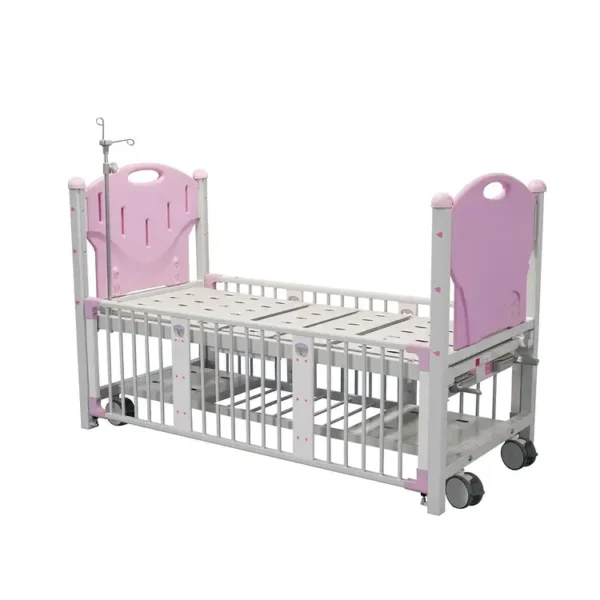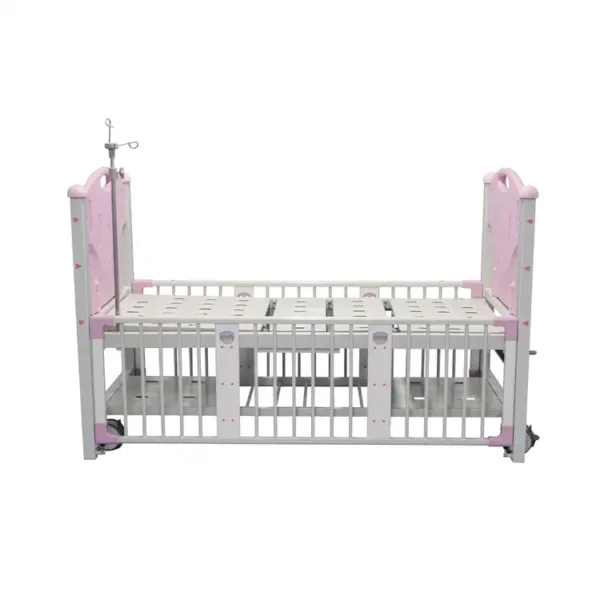Address
304 North Cardinal St.
Dorchester Center, MA 02124
Work Hours
Monday to Friday: 7AM - 7PM
Weekend: 10AM - 5PM
Welcome to My Blog!
Before we dive into the content, I’d love for you to join me on my social media platforms where I share more insights, engage with the community, and post updates. Here’s how you can connect with me:
Facebook:https://www.facebook.com/profile.php?id=100071234835011
LinkedIn:https://www.linkedin.com/company/74943205/admin/dashboard/
YouTube:www.youtube.com/@shandongexpertmedicalequip4695
TikTok:www.tiktok.com/@expertmedical
Now, let’s get started on our journey together. I hope you find the content here insightful, engaging, and valuable.

When it comes to healthcare environments, the selection of appropriate medical equipment is paramount for patient comfort, safety, and efficient care delivery. Among this equipment, the hospital bed stands out as a fundamental element. While standard-sized hospital beds are commonly used, there are situations where a small hospital bed proves to be a more suitable and advantageous choice. This comprehensive guide delves into the various aspects of choosing the right size of a small hospital bed, exploring its benefits, different types, key considerations, and ultimately helping you make an informed decision. Understanding the nuances of small hospital beds is crucial for healthcare facilities aiming to optimize space, enhance patient mobility, and provide tailored care.
Opting for a hospital bed can offer a multitude of benefits in specific healthcare scenarios. One significant advantage is space optimization. In smaller rooms or crowded wards, a hospital bed can free up valuable floor space, allowing healthcare professionals to move more easily and providing a less cluttered environment for patients. This enhanced maneuverability is not only convenient but also crucial in emergency situations where quick access to the patient is vital.
Furthermore, a small hospital bed can contribute to improved patient comfort and a sense of security, particularly for smaller individuals or pediatric patients. The reduced size can make the patient feel less overwhelmed by the bed and more in control of their surroundings. Additionally, transferring and repositioning patients in a hospital bed can sometimes be easier for caregivers, reducing the risk of strain and injury. The compact design of a small hospital bed can also be beneficial in specialized care settings, such as bariatric units where a smaller secondary bed might be needed for specific procedures or recovery phases. Ultimately, the thoughtful selection of a hospital bed can lead to a more efficient, comfortable, and safer healthcare experience for both patients and caregivers.


The market offers a variety of small hospital bed options, each designed to cater to specific needs and patient populations. One common type is the compact hospital bed, which maintains essential functionalities while having a reduced overall footprint. These beds often feature adjustable height, head, and foot sections, ensuring patient comfort and facilitating various medical procedures.
Another category is the pediatric hospital bed, specifically designed for younger patients. These hospital beds often come with safety features like side rails and locking mechanisms to prevent falls. Their smaller dimensions are tailored to the size and developmental needs of children, creating a more comfortable and secure environment.
For patients requiring specialized care, there are small bariatric hospital beds designed as secondary beds for specific situations or transitional phases. These beds, while smaller than standard bariatric beds, still offer enhanced weight capacity and durability. Additionally, some manufacturers offer portable hospital beds that are lightweight and easy to move, ideal for temporary setups or home healthcare environments. Understanding these different types of small hospital beds is essential for selecting the most appropriate option for your specific requirements.
Selecting the right small hospital bed involves careful consideration of several crucial factors to ensure patient safety, comfort, and functionality. One of the primary aspects is the dimensions of the bed itself. It’s essential to ensure that the length, width, and height of the hospital bed are suitable for the intended patient population and the available space within the healthcare facility.
Weight capacity is another critical consideration. The hospital bed must be able to safely support the weight of the patient and any additional medical equipment that may be used. Safety features are also paramount. Look for beds with secure side rails, reliable locking mechanisms, and user-friendly controls to minimize the risk of accidents.
The adjustability of the small hospital bed is also important. Features such as adjustable height, head, and foot sections can significantly enhance patient comfort and facilitate various medical procedures and positioning requirements. The materials used in the construction of the hospital bed should be durable, easy to clean, and resistant to wear and tear, ensuring longevity and hygiene. Finally, consider the mobility of the bed. If frequent repositioning or transportation is required, opt for a hospital bed with sturdy and smooth-rolling casters. By carefully evaluating these key considerations, you can choose a small hospital bed that meets the specific needs of your patients and healthcare environment.
The size and dimensions of a hospital bed play a pivotal role in its suitability for various healthcare settings and patient needs. The length of the bed must comfortably accommodate the patient’s height while allowing for some extra space. An inadequately short small hospital bed can lead to discomfort and hinder proper rest and recovery.
The width of the hospital bed is equally important. It should be sufficient to allow the patient to move comfortably within the bed without feeling restricted, while also being narrow enough to facilitate easy access for caregivers during procedures and daily care. The height of the small hospital bed is another significant factor. Adjustable height features are highly desirable as they allow caregivers to raise or lower the bed to a comfortable working height, reducing the risk of back injuries. For patients, the ability to adjust the bed height can aid in transfers and promote independence.
In smaller rooms or shared wards, the external dimensions of the hospital bed are crucial for optimizing space utilization. A compact design ensures that there is enough room for other essential medical equipment and for healthcare professionals to move around freely. Therefore, carefully considering the size and dimensions of the hospital bed in relation to the patient’s needs and the available space is essential for creating a functional and comfortable healthcare environment.
Safety is a paramount concern when selecting a hospital bed. Several key features contribute to patient safety and should be carefully evaluated. Side rails are perhaps the most crucial safety component, preventing patients from accidentally rolling out of bed. Ensure that the side rails are sturdy, easy to operate, and can be securely locked in place.
Locking mechanisms on the bed’s casters are also essential. These locks prevent the bed from moving unintentionally, especially during patient transfers or medical procedures. A reliable braking system ensures the stability of the small hospital bed.
The materials used in the construction of the hospital bed should be non-toxic, fire-resistant, and easy to clean and disinfect, minimizing the risk of infections and ensuring a safe environment. Additionally, the design of the bed should minimize sharp edges or protrusions that could potentially cause injury. User-friendly controls for adjusting the bed’s height and sections are also important for both patient and caregiver safety. Clear and intuitive controls reduce the likelihood of accidental adjustments. When choosing a hospital bed, prioritize models that incorporate robust safety features to protect patients and healthcare professionals alike.
When evaluating different small hospital bed options, it’s essential to compare their features to determine the best fit for your specific needs. Adjustable height is a common feature, allowing for customized positioning and ease of transfer. The range of height adjustment can vary between models. Similarly, the adjustability of the head and foot sections is crucial for patient comfort and medical requirements. Some hospital beds offer manual adjustments, while others provide electric controls for greater convenience.
The type and quality of the mattress included with the small hospital bed should also be considered. A comfortable and supportive mattress is vital for preventing pressure ulcers and ensuring patient well-being. Some beds come with standard mattresses, while others offer specialized options.
Mobility features, such as the size and type of casters and the presence of braking mechanisms, can vary significantly. Consider the ease with which the bed can be moved and secured. The weight capacity of the hospital bed is another critical feature that must align with the intended patient population. Finally, any additional features, such as integrated scales, trapeze bars, or electronic monitoring capabilities, should be evaluated based on your specific clinical needs. A thorough comparison of these features will help you select a small hospital bed that offers the best combination of functionality, comfort, and safety.
Small hospital beds find versatile applications across a range of healthcare settings, offering tailored solutions for diverse patient needs and spatial constraints. In acute care hospitals, small hospital beds can be particularly useful in specialized units such as pediatric wards, where their smaller size and child-friendly features create a more comfortable and secure environment for young patients. They can also be valuable in post-anesthesia care units (PACUs) or short-stay observation units where space efficiency is crucial.
In long-term care facilities and nursing homes, hospital beds can enhance resident comfort and improve caregiver access in smaller rooms. Their adjustable features can aid in positioning and mobility for residents with varying levels of independence. For rehabilitation centers, small hospital beds with adjustable height and sections can facilitate therapy and recovery exercises.
The portability of some hospital beds makes them ideal for home healthcare settings, allowing patients to receive hospital-level care in the comfort of their own homes. These beds are often designed to be easily assembled and maneuvered within a residential environment. Even in larger hospitals, having a selection of small hospital beds can provide flexibility in accommodating patients with specific size requirements or optimizing space in certain areas. The adaptability of hospital beds makes them a valuable asset in a wide spectrum of healthcare environments.

| Feature | Description | Importance |
|---|---|---|
| Adjustable Height | Allows caregivers to raise or lower the bed for optimal care and transfers. | High |
| Adjustable Head Section | Enables patients to sit up for eating, reading, or medical procedures. | High |
| Adjustable Foot Section | Provides support for the legs and feet, enhancing comfort and circulation. | Medium |
| Side Rails | Prevents falls and provides support for repositioning. | High |
| Locking Casters | Ensures the bed remains stationary when needed. | High |
| Mattress Type | Affects patient comfort and pressure ulcer prevention. | High |
| Weight Capacity | The maximum weight the bed can safely support. | High |
| Bed Length | The overall length of the bed, should accommodate the patient’s height. | High |
| Bed Width | The width of the sleeping surface, affects patient comfort and caregiver access. | Medium |
| Ease of Cleaning | Material and design features that facilitate hygiene. | High |
| Control Type (Manual/Electric) | Impacts ease of use for both patients and caregivers. | Medium |
| Portability | Whether the bed is designed for easy movement. | Medium |
Selecting the appropriate small hospital bed is a critical decision that impacts patient well-being, caregiver efficiency, and the overall functionality of healthcare environments. By carefully considering factors such as size, dimensions, safety features, adjustability, and the specific needs of your patients and setting, you can make an informed choice. The benefits of a small hospital bed, including space optimization and enhanced patient comfort in certain situations, make them a valuable asset in various healthcare scenarios. We encourage you to explore the range of small hospital bed options available and find the one that best meets your requirements. Contact us today to learn more about our selection of high-quality small hospital beds and how they can benefit your facility.
Q: What is the typical size of a small hospital bed?
A: The dimensions of a small hospital bed can vary depending on the manufacturer and the intended use (e.g., pediatric, compact adult). However, they are generally smaller in both length and width compared to standard hospital beds, often ranging from 75-80 inches in length and 30-36 inches in width. Pediatric small hospital beds will be even smaller.
Q: Are small hospital beds suitable for all patients?
A: No, small hospital beds are not suitable for all patients. They are particularly beneficial for smaller adults, pediatric patients, or in situations where space is limited. Patients who are significantly larger or require specialized support surfaces may need standard or bariatric beds. It’s crucial to assess the individual patient’s needs and size before choosing a small hospital bed.
Q: What are the key safety features to look for in a small hospital bed?
A: Key safety features in a small hospital bed include sturdy and lockable side rails, reliable locking casters to prevent unintended movement, durable and easy-to-clean materials, and a design that minimizes sharp edges or protrusions. User-friendly controls for bed adjustments are also important for safety.
